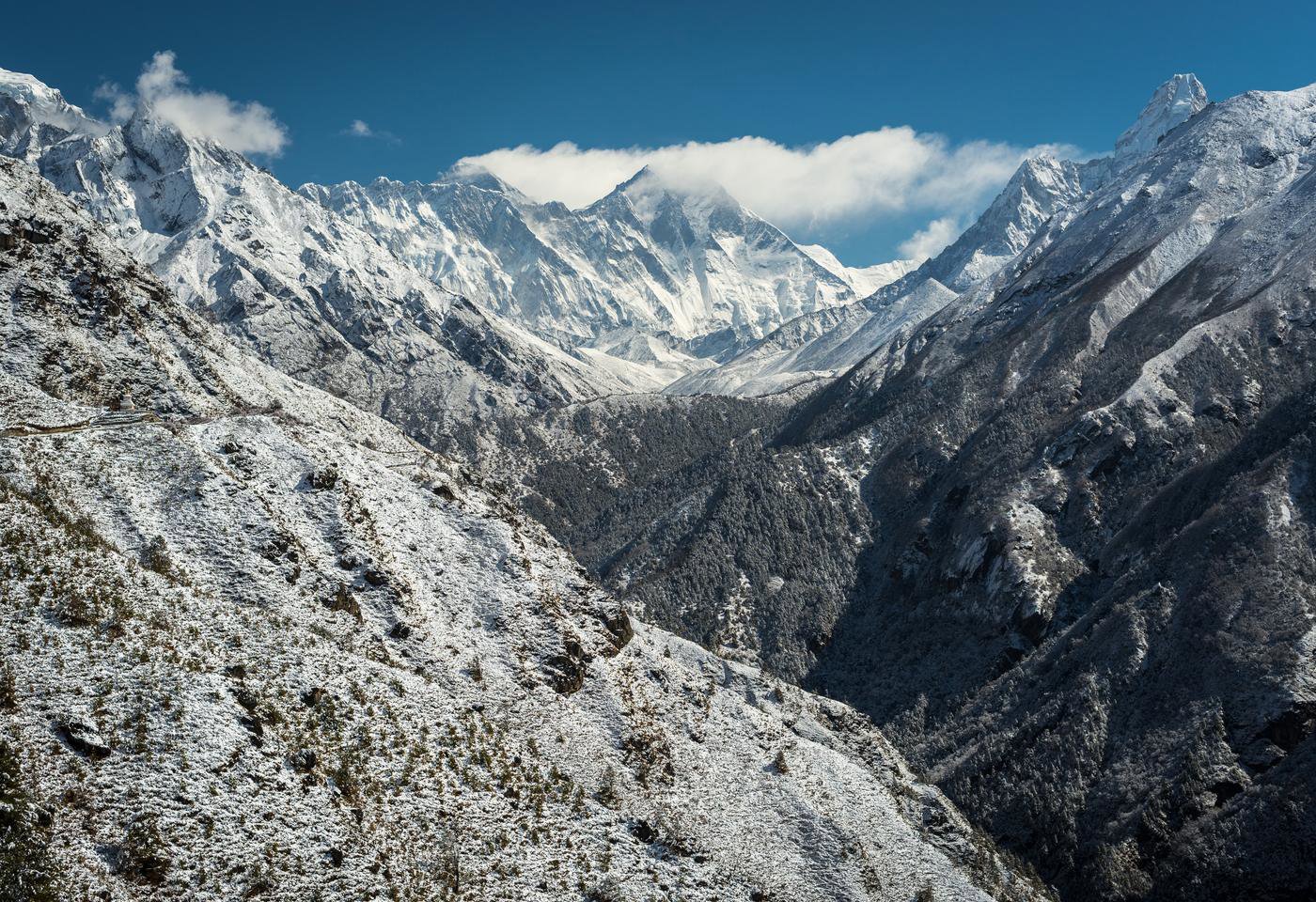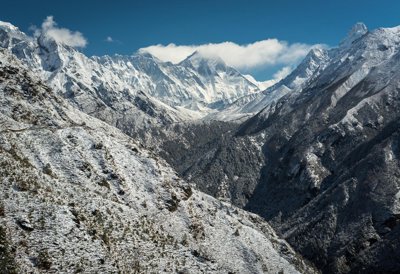When the cod disappeared from the Grand Banks of his Newfoundland home, fisherman Bren Smith saw the light. He realised that we need a new relationship with the oceans - the age of the hunter-gatherers was over and the time of the ocean farmers had begun. After many years of trial and error he developed a new farming system that produces thousands of tonnes of shellfish and edible seaweed, cleans the oceans and absorbs our carbon emissions.
Tom Heap meets Bren and takes a trip to the seaweed farm of the Scottish Association for Marine Science to see if the new techniques in ocean farming can be replicated around the islands and sea lochs of the west coast of Scotland.
Dr Tamsin Edwards of King's College, London, joins Tom to calculate just how much of our carbon emissions might be swallowed by farming the oceans.
What our experts say
We asked Society Fellows, Professor Jennifer Smith from the University of California San Diego and Professor Michael Graham from San José State University to offer some observations on the potential of integrated multi-trophic aquaculture (IMTA) in reducing carbon emissions. Their points take some of the themes of the programme a step further.
Professor Michael Graham
All seaweed biomass in an integrated multi-trophic aquaculture (IMTA) system is new to the world’s biosphere, meaning that it is extra seaweed in the ocean on top of natural seaweed populations. As such, expanding IMTA essentially expands the world's standing stock of seaweed. According to the Food and Agriculture Organisation (FAO) (2020), 32.4 million tonnes of seaweed were farmed in 2018. Seaweed is on average 25-40% carbon on a dry weight basis. Therefore, if we double the amount of farmed seaweed in the world’s oceans due to IMTA expansion, there is potentially an additional 32.4 million tonnes wet weight, which equates to 3.24 million tonnes dry weight, locking up 0.8-1.3 million tonnes of carbon in the IMTA system.
But that would be a one-time calculation, not annual. This is because as that seaweed grows annually and absorbs CO2, it will be released back into the atmosphere when its consumed. To lock it away you would have to harvest and bury it or sink it into the deep ocean, which will lock it away for 500 years, but not permanently.
The non-carbon environmental, economic and aesthetic benefits of full expansion of IMTA would be more dramatic than those on the carbon side of things, but I don’t think that the carbon signal will be trivial. When significant IMTA is undertaken, the seaweed has two major roles: (1) to absorb nutrients released during feeding of higher trophic levels in the IMTA system, and (2) repacking those nutrients into seaweed biomass that can then be turned back into feed for the higher trophic levels or directly sold as an added-value product for human consumption (e.g. biofuels, fertiliser, etc.).
Jen Smith
If you are relying on seaweeds to be the primary carbon sink, the net balance of carbon capture vs. release also depends on what you do with the seaweed biomass after farming:
-
If it is eaten some will end up back in the atmosphere via respiration.
-
If used as fuel it will be a lot better than fossil fuels but some will still end up in the atmosphere.
-
If used as feed for aquaculture this will be better than using wild harvested forage fish from a sustainability perspective.
-
If it is sunk into the deep sea, you will likely get the most carbon sequestration benefits, but who will pay for that? There are so many other uses for seaweeds it seems like it would be a shame to just essentially bury it.
-
There are likely many other creative uses and future business opportunities where seaweeds can specifically contribute to sustainability and reducing greenhouse gas emissions.
For example, recent research has shown that a specific seaweed can reduce methane output in ruminant animals by up to 95% even when fed <1% of daily food intake. Even if we use a conservative estimate of 60% methane reduction, if all cows were fed this seaweed supplement, we could remove 4.26 Gigatonnes of CO2 equivalents from the atmosphere per year.
What are the limiting factors?
 Jen Smith
Jen Smith
-
IMTA farms must be reachable by boat. There are areas of the ocean that are not accessible (e.g. military, shipping) or are in marine protected areas, so not all areas of ocean are suitable
-
Permitting greatly varies depending on location, it can be expensive and take years. For example, it can be different for state versus federal waters in the US.
-
Particular habitats are required and this will vary with the species you are cultivating. Open ocean systems generally will not work due to the lack of nutrients for seaweeds without the need for a complex vertically migrating system.
What are the co-benefits of IMTA, beyond carbon sequestration?
 Professor Michael Graham
Professor Michael Graham
-
It can counteract acidification and deoxygenation
-
Provides a habitat for marine life and supports biodiversity
-
Seaweed can be used as a biofuel
-
Shellfish filter water (e.g. oysters filter nitrogen)
 Jen Smith
Jen Smith
-
Absorb excess nutrients/clean polluted waters/bioremediation
-
Produce local, sustainable sources of protein
-
Increase blue-economy jobs
-
Reduce dependence on carbon intensive food transport systems
-
Carbon sequestration potential
Are there any potential negative impacts of this idea?
 Professor Michael Graham
Professor Michael Graham
-
Spatial and location issues
-
Disease outbreak potential
 Jen Smith
Jen Smith
-
Marine mammal and other species (birds, turtles) entanglement in gear
-
Susceptibility to storms
-
Lost gear leading to marine debris
-
Conflict with other stakeholders e.g. fisherman
-
Water access rights and navigational challenges
-
Start-up costs
Further reading
-
Froehlich, H.E., Afflerbach, J.C., Frazier, M., Halpern, B.S. (2019), Blue Growth Potential to Mitigate Climate Change through Seaweed Offsetting, Current Biology, vol. 29, Issue 18, pp. 3087-3093.e3
-
Krause-Jensen, D., Lavery, P., Serrano, O., Marbà, N., Masque, P. and Duarte, C.M. (2018), Sequestration of macroalgal carbon: the elephant in the Blue Carbon room, Biology Letters, vol. 16, Issue 6. Royal Society
-
Nittle, N. (2020), Could Seaweed Help Save Us From Climate Catastrophe?, Huffington Post
-
Hook, B. (2019), ‘Usurp the burp’: How seaweed can help curb emissions, Daily Democrat
-
Godin, M. (2020), The Ocean Farmers Trying to Save the World With Seaweed, Time
About the series
39 ways to save the planet is a new radio series by BBC Radio 4 developed in partnership with the Society and broadcast in 2021. It showcases 39 ideas to relieve the stress that climate change is placing on the Earth. In each 15 minute episode Tom Heap and Dr Tamsin Edwards meet the people behind a fresh and fascinating idea to cut the carbon.
Over the course of 2021, the Society will be producing events and digital content to accompany the series.
Episode 12: Ocean farmers

Featured card image: Tom Heap and Dr Adrian Macleod at SAMS (BBC)
Featured banner image: Schäferle/Pixabay
Under role number two, whatever carbon is absorbed by the seaweed through photosynthesis at the IMTA site, will be released back into the atmosphere when it is utilised either in the IMTA system or as an added-value product.
